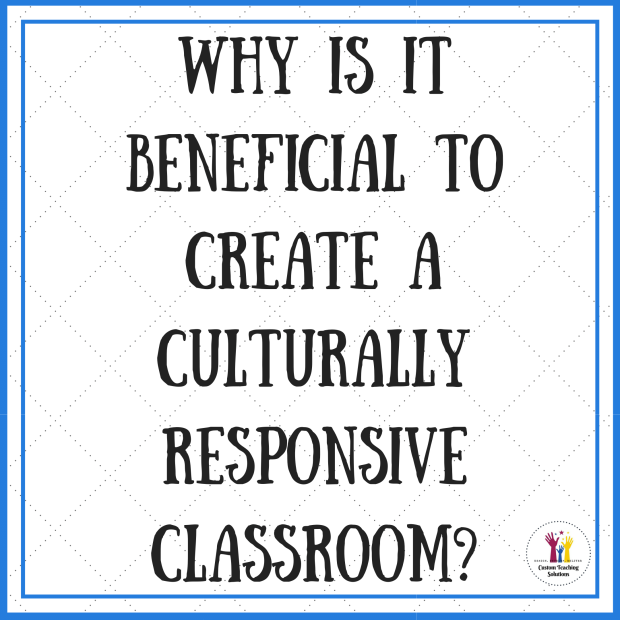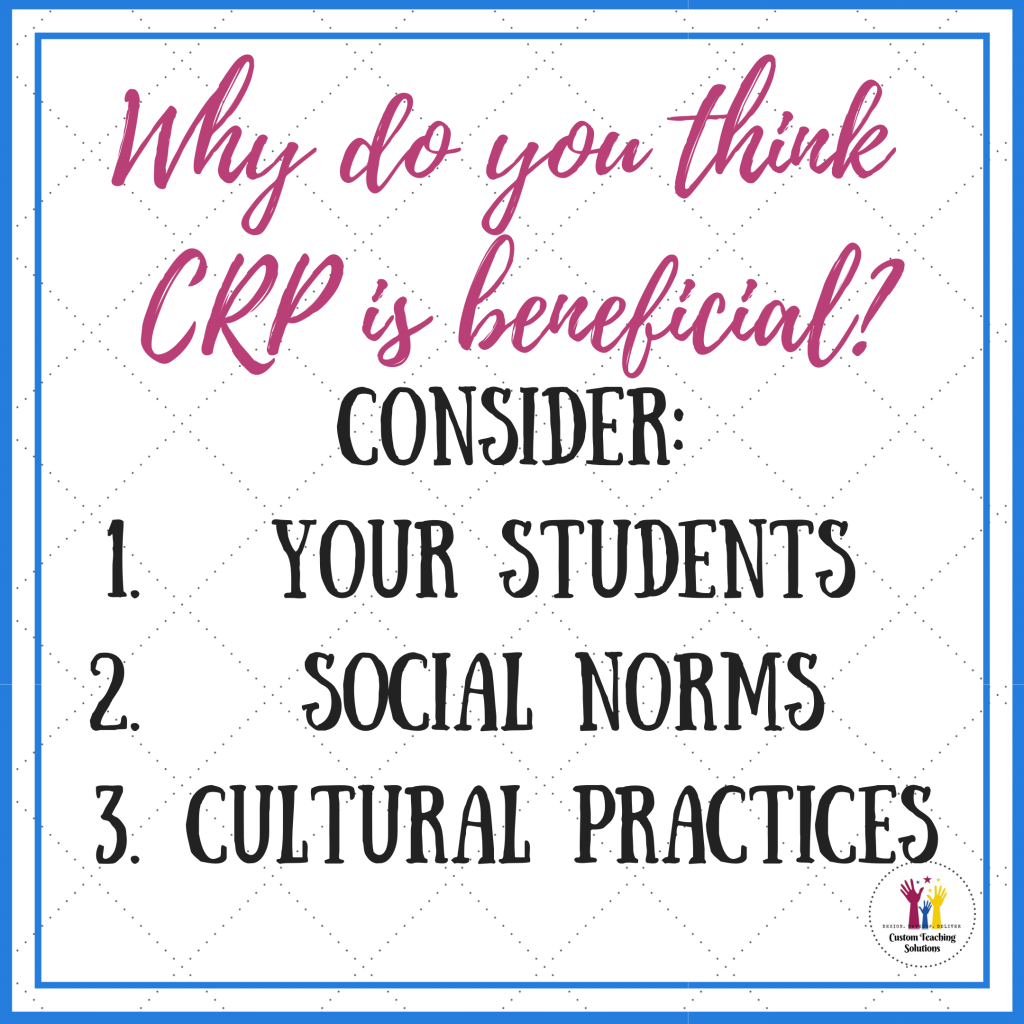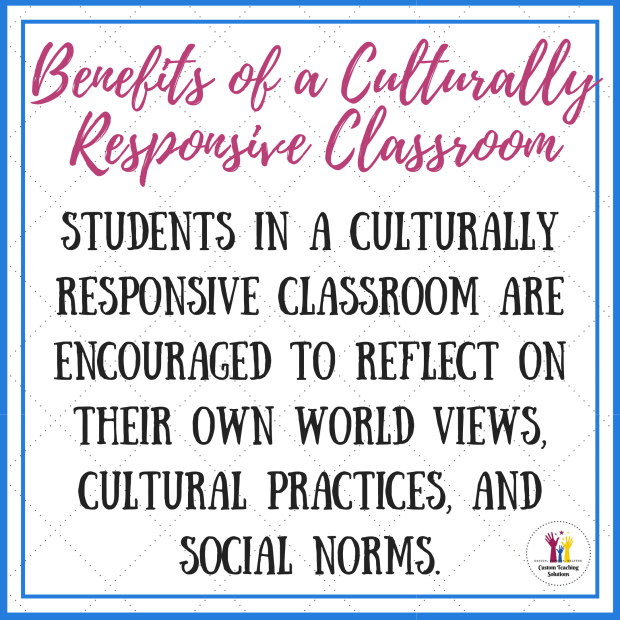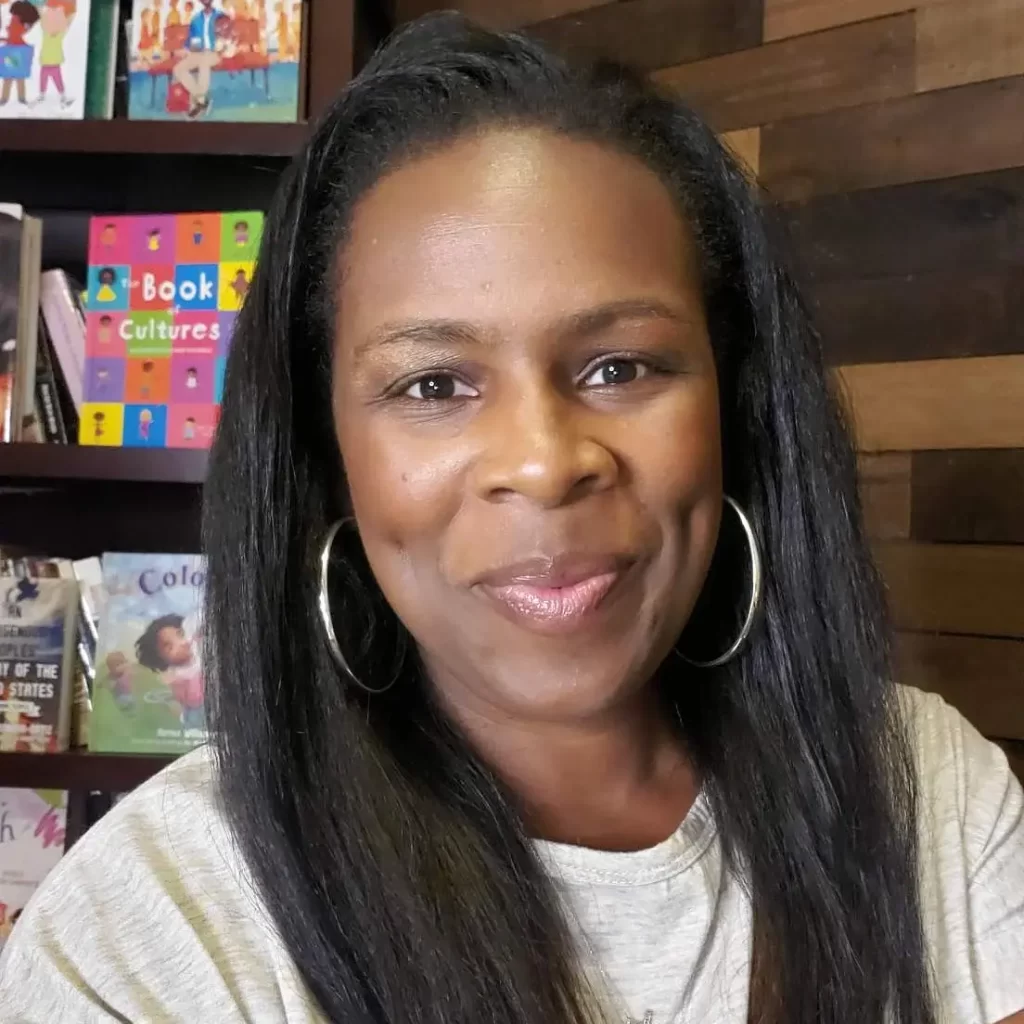Culturally responsive. Culturally relevant. Culturally competent. Culturally…
Each year, educators are becoming more aware of these terms, but what do they really mean?
Most importantly, why is it beneficial to create a culturally responsive classroom?

Alright, so here is the skinny. And I mean skinny, because these concepts have been researched and written about for years by people such as Jacqueline Irving, Gloria Ladson-Billings, Geneva Gay, and Zaretta Hammond. I encourage you to read one of their books or scholarly articles.
Culturally Responsive/Relevant Pedagogy
Culturally responsive pedagogy (CRP) encourages teachers to observe the cultural and ethnic make up of the students in their classroom for the purposes of incorporating practices, language, and texts from those cultures and ethnicities to both affirm these students and positively educate other students.
Culturally relevant practices are an extension of culturally responsive pedagogy. In this, teachers are encouraged to be culturally competent, meaning they have the ability to understand and effectively communicate and educate students of multiple racial and ethnic backgrounds. To do this teachers must be aware of their own world view, cultural practices, and social norms. Then, they must be willing to learn and understand other world views, cultural practices and social norms.
Benefits of Using CR Pedagogy
So, why is utilizing culturally responsive and relevant pedagogy beneficial in the classroom?

I could answer this question now, but first I want you to take a minute and think about the brief descriptions I provided above. Think about the students you typically educate, the dominant social norms, and prevailing cultural practices. Then, list three reasons why you think incorporating this type of pedagogy would be beneficial in your classroom.
Ok. Hold on to that list. You may want to add a few more reasons at the end.
Essentially, I believe the answer to this question comes back to the purpose of education. If the purpose of education is simply to relay information from one source to a recipient, then there is no need for most of the pedagogical strategies we teachers employ. However, if the purpose of education is to develop students who think critically, reflect intentionally, and question thoughtfully, then a culturally relevant curriculum does that. If the purpose is to prepare students, both personally and academically to engage in a diverse world with empathy, compassion, and conviction, then a culturally responsive pedagogy is designed to also do that.
CR Pedagogy Propositions
Ladson-Billings states that, “culturally relevant pedagogy rests on three criteria or propositions: (a) students must experience academic success; (b) students must develop and/or maintain cultural competence; and (c) students must develop a critical consciousness through which they challenge the status quo of the current social order” (160).
Essentially, students experience academic success because their racial and ethnic identity is affirmed through representation. These students are not always being asked to relate to experiences and concepts for which they have no knowledge base or point of reference. Instead, cultural bridges are built between prior knowledge/experience and new concepts to aid in more complete understanding.

Just like the teacher, students in a culturally responsive classroom are encouraged to reflect on their own world views, cultural practices, and social norms. Then they are guided through lessons that examine the world views, cultural practices, and social norms of their classmates and others across the world. Students who see themselves and members of the global community represented and valued in the classroom are able to engage in more robust discussion of a variety of topics, are challenged to think about concepts and problems from multiple perspectives, develop an appreciation for, and understanding of differences. Employing a culturally responsive pedagogy allows for the discussion of difficult, but necessary topics like injustice, inequalities, and social and economic disparities due to race, class, and gender.
While engaging in self reflection, studying rigorous texts and concepts, and navigating profound and sometimes difficult discussions, students develop a “critical consciousness through which they challenge the status quo of the current social order”(Ladson-Billings, 160).
Simply put, by creating a culturally responsive classroom we are empowering students of every racial and ethnic background to learn and grow more deeply, more purposefully, and more completely.
Wow!
Cheers to intentional teaching,
Joce
P.S. Subscribe to my email list to get a FREE Culturally Responsive Unit planning resource!
Looking for in person or virtual training and coaching to develop a culturally responsive environment at your school? Check out The Intentional Teacher Series and contact me to schedule!
Citation:
Ladson‐Billings, Gloria. “But Thats Just Good Teaching! The Case for Culturally Relevant Pedagogy.” Theory Into Practice, vol. 34, no. 3, 1995, pp. 159–165., doi:10.1080/00405849509543675.







4 thoughts on “Why Create a Culturally Responsive Classroom”
Can’t wait to get it! Thank you for sharing!
You’re so welcome! 🙂
Pingback: 6 Ways to Create a Culturally Responsive Classroom - Custom Teaching Solutions
Pingback: Three Benefits of Creating a Culture-Centered Classroom - Custom Teaching Solutions